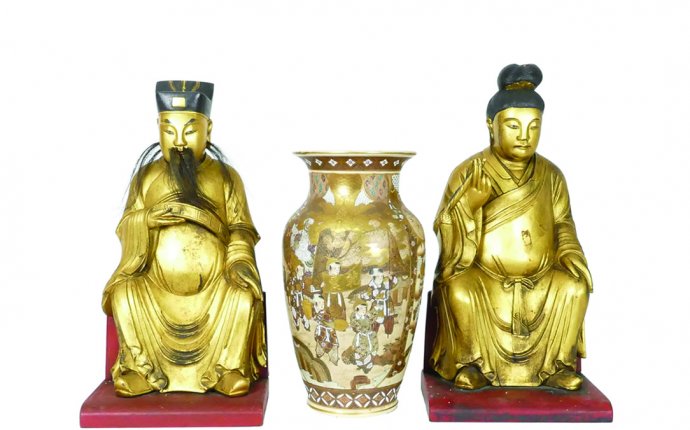
How to Know if Furniture is Antique?
You’re going to spend some money on furniture and accessories, so you may as well buy something that can hold its value after you use it. Antiques often have a greater chance of retaining value than new machine-made furniture. Plus, antiques add a sense of warmth, history, and character to your house.
Whether you are purchasing antiques because of their beauty, or because you simply love older things, or because you are hoping that they will hold their value, the best rule is to buy what you like — and to keep your “RADAR” out for values. RADAR is an acronym that stands for Rarity, Aesthetics, Desirability, Authenticity, and Really great condition.
When you find an antique that meets these five criteria, you’ve probably found an item that’s likely to appreciate in value as the years go by.
Rarity
What constitutes a rarity? If no one else on your block owns one, you know that it’s worth something. If no one in your zip code has one, it might be worth even more. And if no one in your area code has one, chances are, you have a piece that’s pretty valuable.
Of course, something might be rare because it just didn’t make it in the marketplace. The piece might be too large, too loud, or too ugly. Still, if you like it, well, this aspect of rarity can work to your advantage.
How do you know if it’s rare? Here are a few of the attributes of a rare piece.
- Few were made in the first place. For example, only royalty or the rich could afford gold boxes for snuff, so only a few were made.
- Few of the original pieces remain. Some functional and breakable antiques were manufactured in relatively large numbers but are now more scarce, such as crystal stemware, porcelain dishes, and tea sets. But even items that aren’t as fragile as glass or ceramics, such as wood tables and cabinets, are at risk of being damaged, and perhaps damaged so badly they are discarded over time.
- A rare or unusual color or design for a particular type of antique. Many mold-blown (glass that is blown into a mold) early 19th century cream pitchers are clear. Sapphire-colored cream pitchers from this era are rare. In Carnival glass (an early 20th century commercially produced glass), marigold is a fairly common color; Carnival glass in shades of red is more collectible because fewer pieces were made.
- Uncommon subject matter or style for a particular artist or manufacturer. Tiffany made few wisteria lamps (lampshades that featured wisteria blossoms) because they contained hundreds of pieces of very small glass and the process was extremely time-consuming. These lamps are rarer than Tiffany lamps with poppy and daffodil motifs, although no one would call any Tiffany lamp commonplace.
- Unusual size or shape. These antiques “shaped up” in unusual ways. Some examples of rarities in terms of size or shape include silver spoons or other utensils with a specialized purpose, such as silver stuffing spoons used for stuffing a turkey or goose or marrow spoons used for coaxing the marrow out of bones.
- A miniature, fine-quality salesman’s sample of a piece of furniture from the early 19th century, or a large capacity candle mold for making 20 to 40 candles instead of the more common dozen-capacity molds, also are unusual.
- Reproducibility. If a piece is not being reproduced or is difficult to reproduce, its rarity increases.
Aesthetics
You may look at a piece, and think “If only that orange line weren’t painted down the middle of it . . .” or, “If only that carving weren’t slightly off-center. When you can look at a piece without wishing this or that were different about it, when all the elements of it blend together in perfect harmony, and when it has an overall pleasing appearance, then that item really has it in the aesthetics department.
Some folks believe that an object’s aesthetic value is a matter of personal taste. On the other hand, some pieces of art and furniture have almost universal aesthetic appeal. Visiting art galleries and museums is one great way to see antique objects of art that are considered aesthetically pleasing. Books on your areas of interest also will show the better pieces.
Desirability
Desirability is defined by what’s in vogue in the current market. A few decades after Tiffany created his now-famous lamps, some people thought of them as gaudy, and so prices were steals by today’s standards. Now people covet the artistry that Tiffany displayed.
Authenticity
Is it the real thing or is it a mere shadow of the original? Is it from the time period the seller says it’s from? Is it made by the artist or company that is indicated? If it’s signed, is the signature real? Is it the type of antique the seller says it is?
Part of the mystery and fun of antiques is separating truth from fiction. As technology and the ability to reproduce items become more advanced, identifying the authentic antique becomes more difficult.
Here are some clues and tips to help you analyze whether an antique is authentic:
- Time period: A piece of furniture can look old and still be born yesterday. For example, you can use old wood and create a new piece of furniture. You can hire one hundred people to trample a new Oriental rug and thus, give it that worn in look.
- Artist or company: An object with a Tiffany signature is worth more than an object without one. However, a signature is not in itself enough to authenticate a piece. Here’s where your specialization comes in: You need to know the types of pieces Tiffany made — the texture of the glass, the colors, and the styles — and make sure that all the elements make sense before you can believe the signature.









